
Intro
Most of our reviews are pretty long — and take a long time to produce — because we want to provide enough info for you to actually determine whether the gear we tested will work well for you.
But we get asked to check out an increasingly wide range of products, and sometimes, we just want to tell you about something we’ve been using and loving lately.
So that’s where this monthly series — Stuff We Like — comes in, where we keep you current on a broad range of stuff we’re currently digging.
And if there’s something you love that you think we ought to check out, drop us a note in the comment section below.
High Above Venture Hip Pack
MSRP: $140 (as tested)
David Golay: My conversation with High Above over on Bikes & Big Ideas a couple of weeks ago reminded me that I’ve been meaning to write up something about this pack. I’ve tried a whole bunch of MTB hip packs over the years, and the Venture is the one I reach for the most often by far.
Two main things set it apart: the build quality and the fold-top closure design, the latter of which uses a big flap with a buckle and strap rather than a more traditional zipper to close the top of the pack. Like all of the High Above packs I’ve tried, the Venture is made from especially high-quality materials with beefy stitching, and it’s held up to a whole lot of use much better than any hip pack I’ve tried from any other manufacturer. High Above also offers a lifetime warranty under which they’ll repair (if possible) any of their packs for free, or replace it if absolutely necessary.
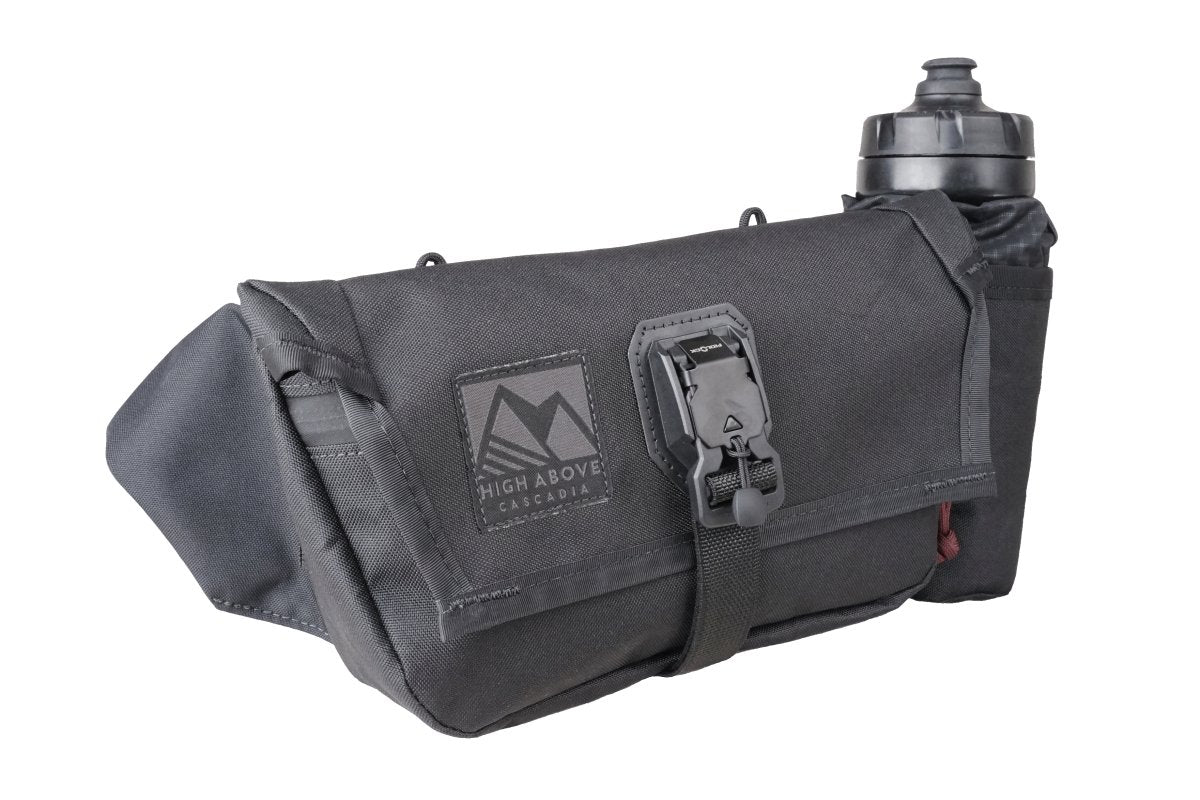
I was honestly somewhat skeptical of the fold-top design of the Venture when I first saw it, but I quickly came around once I actually tried it — the layout is excellent. The biggest upside in my book is that the Venture does an especially good job of cinching down to take up any unused room in the pack, which in turn makes it much more stable and less prone to bouncing around than most packs if you don’t have it stuffed to the gills. The relatively large footprint but thin front-to-back profile for a pack of its size definitely helps there, too; the Venture is probably the most secure-feeling, least floppy / bouncy hip pack I’ve used to date.
The interior organization is nice, too. Inside the main body of the pack there are two open-top pockets along the outer face, which I normally use for a tube and a multi-tool / tire plug kit. The rest of the main compartment is mostly open with a full-width divider flap to keep things a little more organized, and there’s a metal key clip on a paracord leash in there as well. On the outer face of the pack, underneath the main closure flap, there’s a small zippered pocket where I usually leave an emergency credit card, as well as the included straps that you can attach to the top of the pack to cinch a jacket or other bulkier item to it.
Finally, there are a couple of options for hydration attachment on the Venture. The standard version (which I’ve been using) has provisions for attaching a “Bottle Rocket” (a standard bottle / can sleeve with a drawstring) to either or both sides of the pack via a quick-release plastic strap. One Bottle Rocket is included, and you can purchase a second separately if you’d like. Or, for a $30 upcharge, you can get the “Quickdraw” version of the Venture, which puts a Fidlock quick-release bottle attachment on the right side of the pack. A 15oz Fidlock bottle is included with that upgrade, and you can add a Bottle Rocket to the left side if you’re so inclined.
There are definitely cheaper hip packs out there, but the Venture carries better than most, its interior organization is sensible and useful, it’s extremely durable and well made (in the US), and it comes with a lifetime warranty. It’s the kind of product that I’d put in the “buy once, cry once” camp. It’s spendy, but it’s genuinely excellent and should last an extremely long time.



Zack Henderson: I am just popping in here to give a +1 to David’s endorsement of the Venture. I’ve been rocking High Above’s (also excellent) Lookout pack for over four years now, and not a single stitch has gone astray despite surviving multiple crashes, rarely being washed, and generally getting hammered on. Despite my love for the Lookout, the Venture has eclipsed it as my new favorite. This is due (as David mentioned) to its stability on the bike and the added versatility brought by the fold-top design. The fold top and adjustable closure strap help the pack adapt well to carrying loads both large and small. While the zippered closure of the Lookout is just a bit quicker to use than the Fidlock latch on the Venture’s flap closure, the adaptability of the Venture wins out for me.
Norrona Senja Gore-Tex Active Jacket
MSRP: $549
Luke Koppa: In the last edition of Stuff We Like, I discussed some of the lightweight rain shells I’ve been testing. I find these sorts of “just in case” shells to be extremely useful in mountain environments where there’s almost always at least some chance of inclement weather, and Norrona’s Senja Gore-Tex Active Jacket is another one of my current favorites.
Designed for trail running, this jacket stands out from most others in its class because it uses a 3-layer Gore-Tex Active laminate. This not only lends it excellent water resistance, but it also makes it more breathable than most other waterproof membranes we’ve tested.
To be clear, I still won’t wear the Senja Gore-Tex Active Jacket if I’m working up a sweat and it’s not actively pouring or super cold. I’d say the same of every single waterproof shell I’ve tested; despite the improvements we’ve seen in their breathability over the years, waterproof shells still trap in a lot more heat and moisture than most non-waterproof layers.




That said, the Senja Gore-Tex Active Jacket does let me keep it on a bit longer during high-output activities before sweating than most other shells I’ve tried in its class. This jacket also features open vents on the back, zippered vents on the side, and a snap along the main zipper so you can keep that zipper partially open. Combined with its fabric, those vents help reduce (or at least delay) overheating.
Aside from that, the feature set is very minimal; there’s an adjustable (but non-helmet-compatible) hood, a tiny chest pocket, a rear zippered pocket, and a pass-through zipper at the wrist for a watch. The final feature is a small strap that lets you pack the jacket into its rear pocket and wear it like a hip pack. I almost always have some sort of pack with me, so I haven’t utilized that feature often, but it is nice for quicker, pack-less outings.
As for fit, I’d say the Senja Gore-Tex Active Jacket is pretty typical for this class of ultralight shells. It’s notably slimmer than most climbing or snowsports shells, but I can still fit a light midlayer underneath (I have a size Medium and am 5’8”, 155 lbs / 173 cm, 70 kg). It weighs a scant 265 grams and packs down to the size of a grapefruit.
If you’re less concerned with breathability and want to save some dough, I encourage you to check out the Strafe Scout and Norrona Falketind Gore-Tex Paclite Jacket that I discussed last time in Stuff We Like. But if you want a highly packable and waterproof shell that also breathes better than most of its competition, the Senja Gore-Tex Active Jacket warrants a close look.
EVOC CP 18L Camera Bag
MSRP: $280
David Golay: Super small point-and-shoots aside, carrying camera gear on a mountain bike sucks. However, the EVOC CP 18L backpack is, by a long shot, the best solution I’ve tried to date. The CP 18L is specifically designed to be an action sports camera bag, and its layout is especially well-tailored to be stable and secure even when heavily laden. That makes it a whole lot more pleasant to actually ride with than a number of other similarly sized camera bags I’ve tried to date (including EVOC’s now-discontinued Photop 16L).
There’s nothing too wild going on with the CP 18L’s design, but it stands out for feeling very stable and carrying well, and for having useful organization with easy access to the padded camera section of the bag. It’s also roomy enough to carry a bigger full-frame mirrorless or SLR body and a couple of substantial lenses without being so huge as to be super cumbersome on the bike.
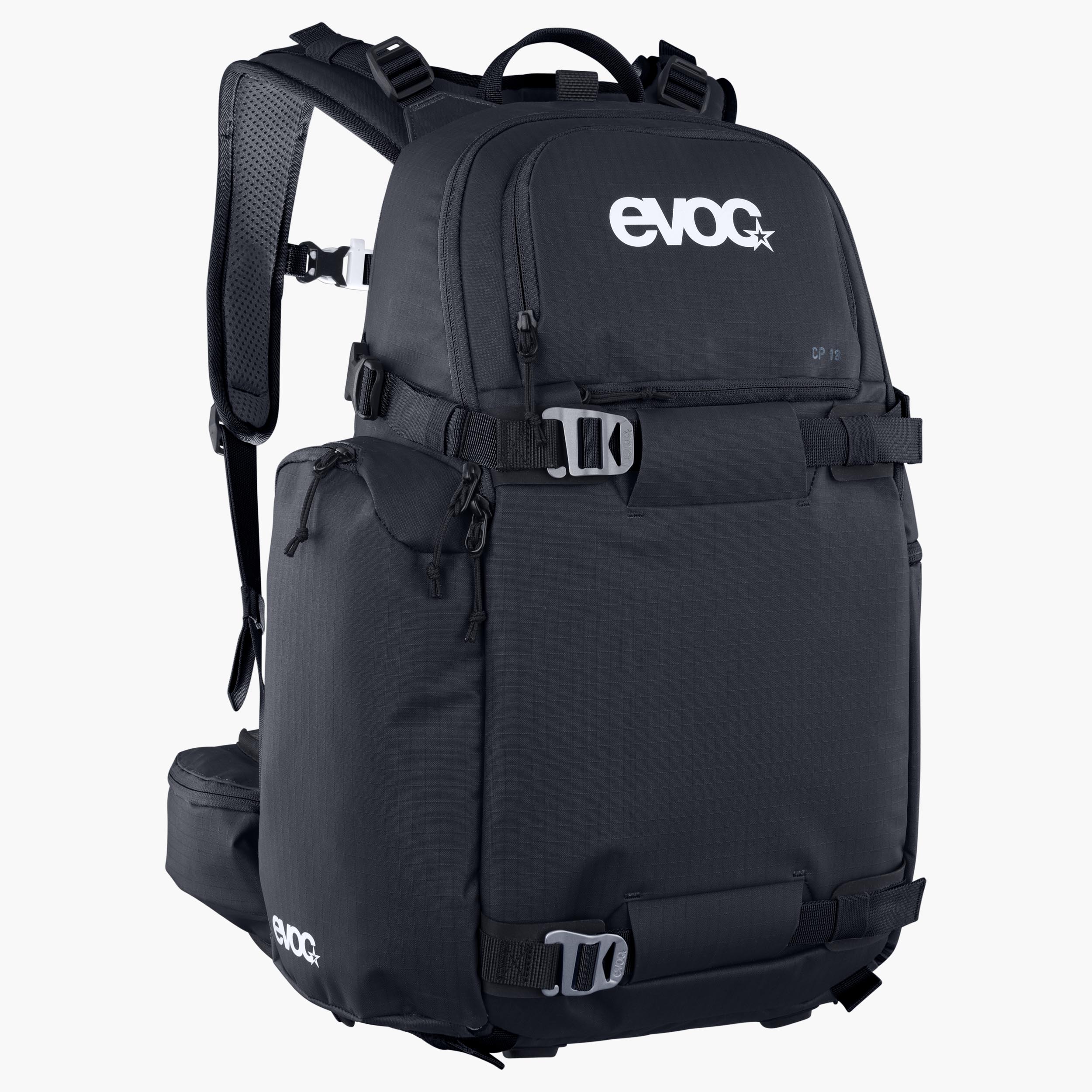
The padded camera storage compartment sits at the bottom of the pack and can be accessed via a zippered opening on the right side of the pack, or through a separate zippered hatch on the back panel of the pack. It’s a relatively normal padded camera cube (integrated into the pack, rather than being removable) with an assortment of velcro dividers to organize it to suit your needs.
For reference, my standard bike photo kit is a Nikon Z8 body with Nikon 14-24mm f2.8 S and Tamron 35-150mm f2-2.8 Di III VXD lenses. That all fits comfortably with room for either one more small-ish lens, or to swap in a somewhat bigger one (e.g., a Nikon 100-400mm f4.5-5.6 VR S in place of the 14-24mm) if I’m taking the pack out for some non-MTB use.
The CP 18L also has a couple of zippered pockets for storing other items in the upper portion of the pack; a zippered pouch for a water bottle or smaller hydration bladder on the left side; and relatively large zippered pockets on both sides of the hip belt. A set of straps and a stowable pouch on the outer face of the pack can be used to carry a tripod, poles, or an ice axe, and an integrated rain cover is also included.





There are a few small details that aren’t perfect. The back panel flap to access the camera compartment has three velcro pockets for memory card storage. They work fine for that use but would be a lot more versatile if they were just a tiny bit deeper so that they could also accommodate spare batteries. There’s a much larger zippered pocket below them with a similar issue — its front face is fairly taut and not at all stretchy, so putting one spare battery and a thin multi-tool in it pretty much maxes out its capacity, despite there being tons more room in the other two dimensions. Using the exterior strap to carry a tripod also tends to cinch the upper portion of the pack down more than would be ideal. But overall, the CP 18L is, by far, the best solution I’ve come across for carrying bulkier camera gear on a mountain bike.
(If you’re more of a minimalist, Evoc’s 7-liter Capture hip pack warrants a very close look — check out our review here.)
Gregory Alpaca Wide-Mouth Duffel 50
MSRP: $139.95
Kristin Sinnott: I’m a sucker for a good bag, and when I saw Gregory’s new Alpaca line of duffels, I wanted one. Once the Alpca Wide-Mouth Duffel 50 arrived, it did not disappoint, and I knew it would fit into my everyday life. So far, it’s done everything from toting drinks, snacks, and soccer gear to my 6-year-old son’s practices to serving as a snack bag for road trips, helping me stay organized on camping trips, and more. This duffel is built with a rugged fabric and padded walls, and its metal frame is somewhat rigid, allowing the sides to stay open for easy access.
The wide-mouth design makes it easy to see the entirety of the contents, which is the big draw relative to most traditional duffels, which can sometimes feel like bottomless pits when trying to locate a particular item inside. The Alpaca Wide-Mouth 50 also has a couple of mesh internal pockets on one side and an internal zip pocket on the other to keep things slightly organized. And as long as you don’t overload the duffel, which, admittedly, I do on occasion, the zipper closure keeps everything contained and allows for easier use of the handles.



Chromag Dune Supa Soft Grips
MSRP: $35
David Golay: I’m pretty fussy about grips. Despite having relatively big hands, I find that fairly thin grips tend to help me stave off arm pump and hand fatigue on longer descents, particularly if I can find an option that’s thin and relatively soft.
Of course, thinner grips — especially lock-on ones — tend to be firmer and less cushy in general. But there’s also an inflection point of sorts where I actually start to prefer a somewhat firmer grip as the diameter increases. I think this is because super thick and squishy grips start to feel vague and mushy, and I wind up over-gripping the bar to reestablish a solid-feeling connection.
I’ve tried a lot of different grips over the years, and I haven’t found any other lock-on grip with a similar diameter to Chromag’s Dune Supa Soft (30 mm) that’s even close to being as soft and tacky. The Sensus Lite is the definite second-place contender, but it’s not a particularly close second.
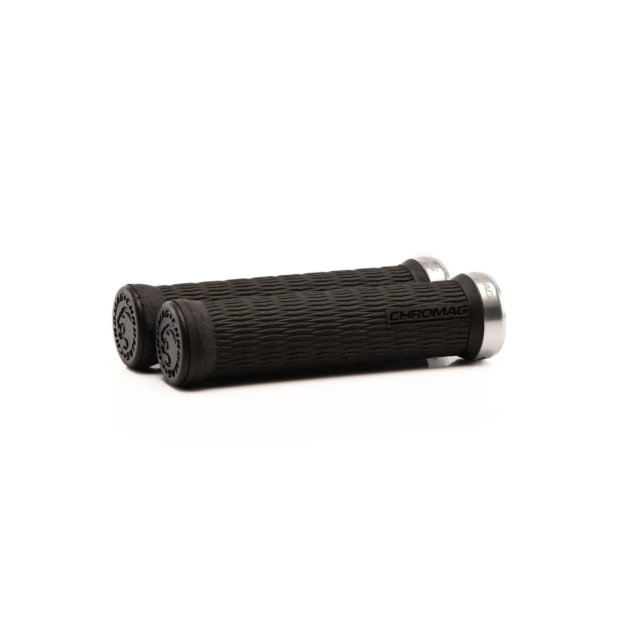
There are, of course, tradeoffs. The, well, ‘supa soft’ 9A rubber that Chromag uses for the Dune Supa Soft presumably isn’t the most durable formulation out there, but the pair I’ve been using still look barely worn after about three months of regular use, so it’s not like it’s terrible. (The standard version of the Dune uses 15A rubber, but I’ve yet to try those.) The Dune Supa Soft has a co-molded plastic outer cap that serves to protect the outer face of the grip, rather than a burlier outer lock-on clamp, but you’re not chewing up that extra soft rubber every time you lay your bike over (at least, not where it matters).
Now, I would love it if the texture pattern on the Dune had just slightly deeper grooves to help move moisture off the grip. I prefer to ride gloveless if I can get away with it, and while the Dune Supa Soft works great for that in a lot of conditions, the threshold for how wet things need to be for the grips to start to feel slippery is a distinct notch lower than the Sensus Lite, for example.
But if you want a lock-on grip that’s really soft and tacky without being super thick and squishy feeling, I’ve yet to find anything that comes close. They’re great.
Hestra Vertical Cut CZone 3-Finger Gloves
MSRP: $185 USD
Zack Henderson: My season pass just showed up in the mail, so it’s officially the time of year when I start getting hyped for my first days on skis and snowboards. I’ve oscillated between snowboarding, ski touring, and inbounds skiing over the past several years to keep things interesting, but my Hestra Vertical Cut CZone 3-Finger gloves have been a fixture in my gear bag regardless of my chosen type of day in the snow.
The gloves are made of goat leather, with some burly reinforcements in high-wear areas and a mega-durable polyester material on the back of the hand. They were quite stiff when I first bought them, but like any quality leather glove, they have worn in to feel almost molded to my hand shape. Dexterity is excellent, and while the padding on the knuckles may seem superfluous, I’ve punched a couple of trees and have appreciated the extra protection.
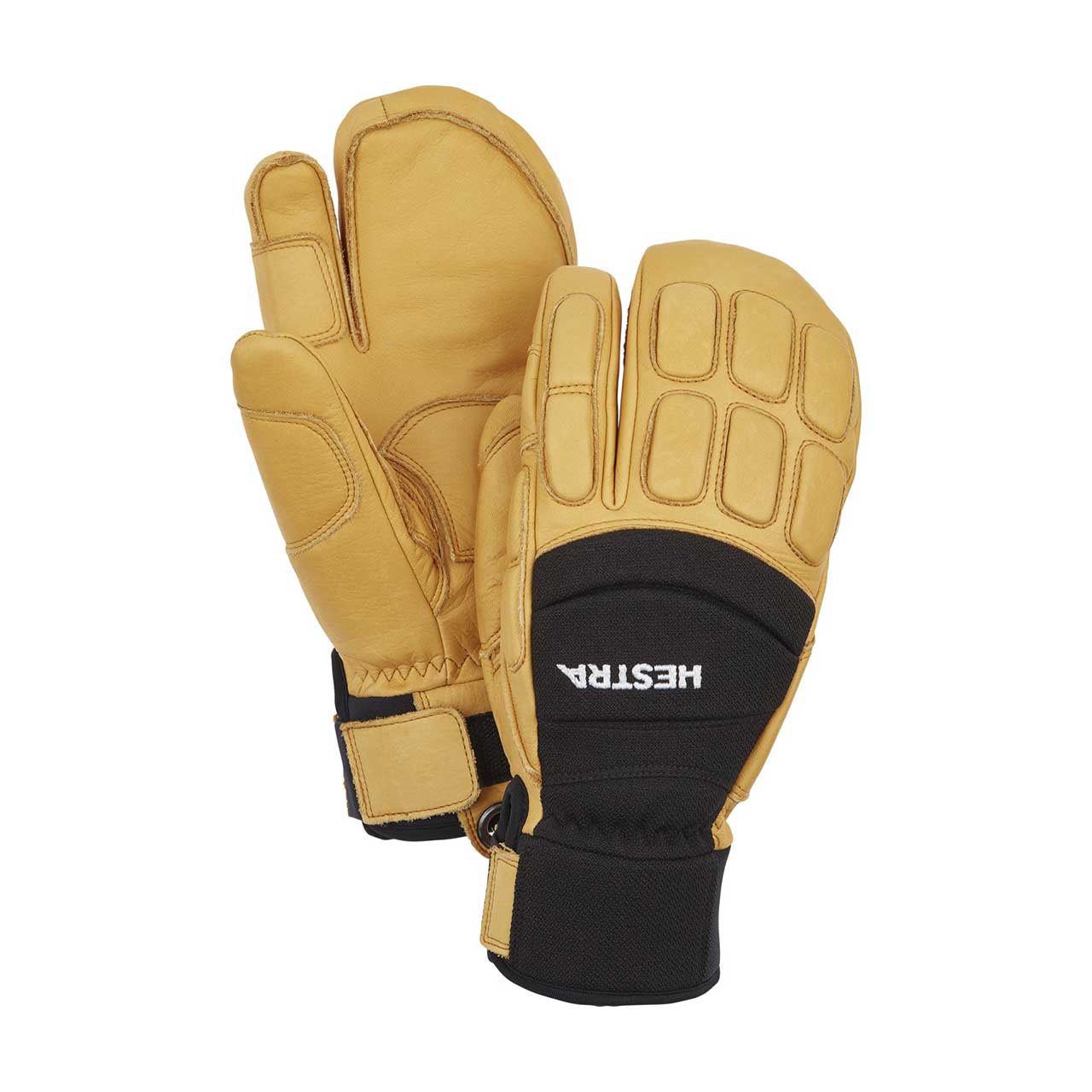

Inside, Hestra’s polyester lining wicks moisture incredibly well, with these gloves never really feeling soggy when it’s a bit too warm out. Speaking of that, these definitely err on the warmer side, but for my poor circulation, they are quite comfortable as long as temps are below freezing. If I’m touring (which I don’t do much of anymore), I’ll typically take off my gloves or just wear a thin liner for the way up anyway, but be warned that these Hestra Vertical Cuts would be furnaces for high-output efforts.
Multi-layer glove systems may make more sense if you want a single modular setup for all types of temperatures, but these Hestra Vertical Cuts are burly as hell, warm, and do not have a tear or popped seam after five years of use. They’re an investment, but one that delivers high performance and longevity.
Mountainsmith Trekker FX Lite Pole
MSRP: $39.95
Luke Koppa: Mountainsmith’s Trekker FX Lite is a pretty basic trekking pole with one feature that caught my attention — it has a built-in ¼”-20 threaded bolt so you can use it as a monopod with a camera, binoculars, etc.
I’ve been looking for a trekking pole / monopod hybrid because those two products are just begging to be combined together — at their cores, they’re both basically just sticks. After researching the DIY and fancier alternatives, the Trekker FX Lite seemed like a good option due to its simplicity and moderate price (note: it’s sold as a single pole, not a pair).
I’ve brought this pole with me for at least 20 days of hunting this fall, and so far, it’s done its job admirably. The foam knob that covers the threaded bolt in the grip is a bit bulkier than the tops of most trekking poles, but I never really found that to be a negative (unless you frequently scrape snow or something with the grip of your poles). It takes seconds to unscrew that knob and screw on your optics, and having the extra stability of a monopod has been super helpful when I leave my spotting scope and tripod at home and am doing a lot of glassing with my binos.
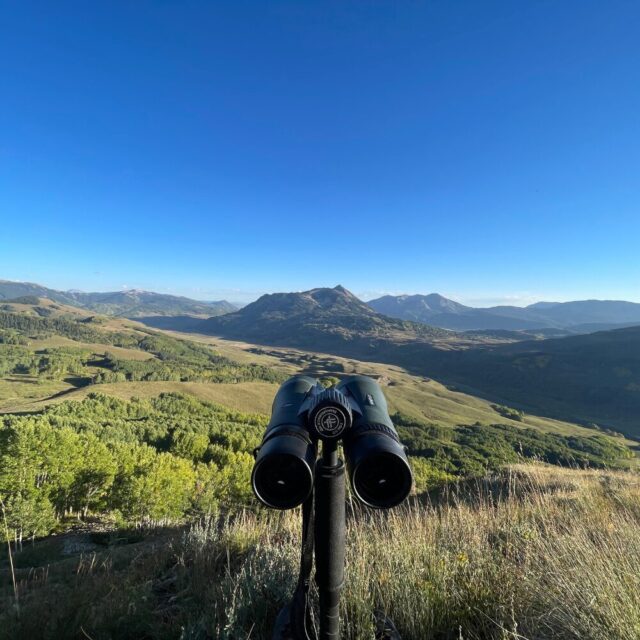
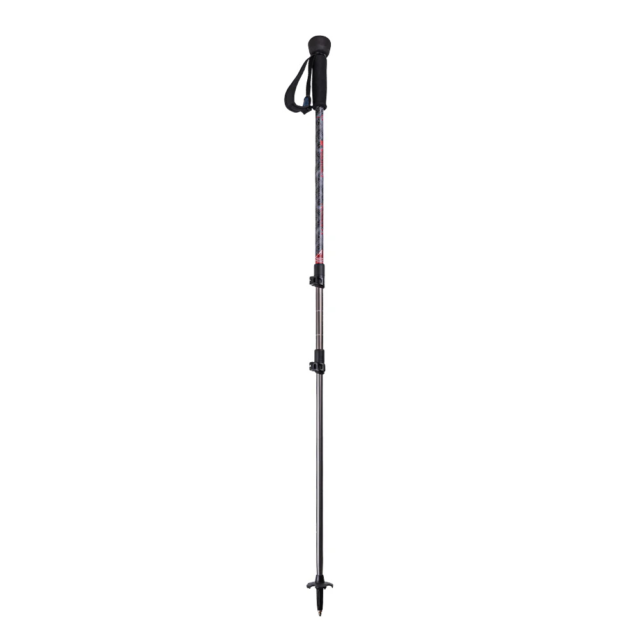
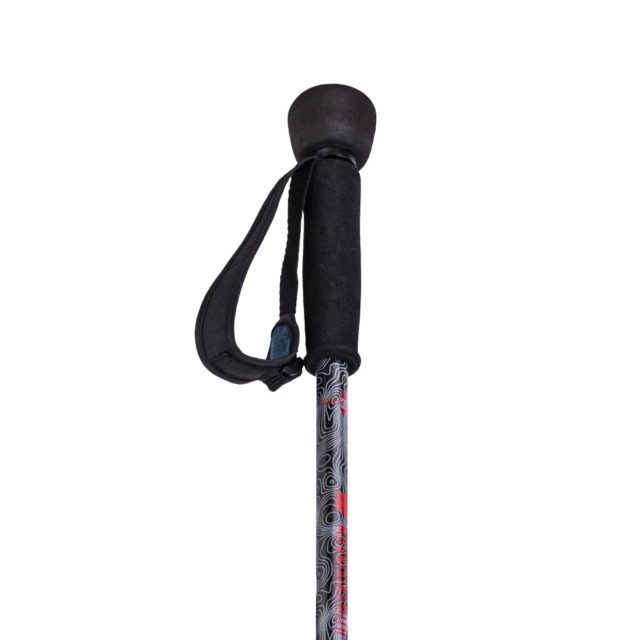
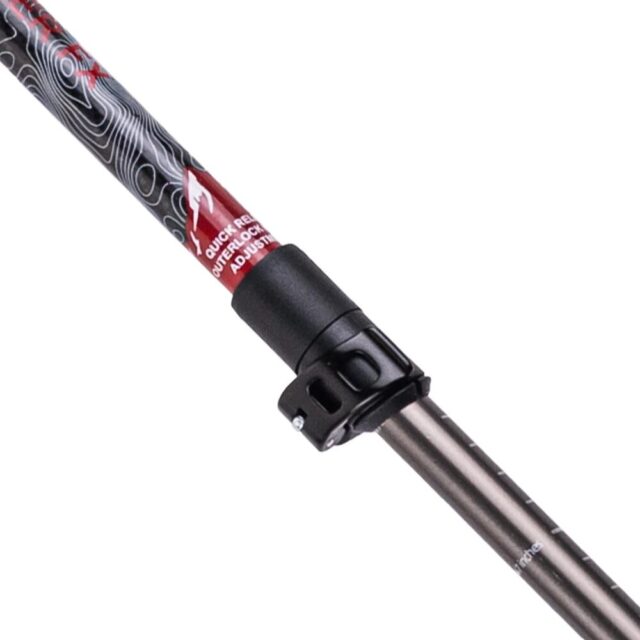
That said, it’s not without its faults. First and foremost, it comes with a terrible wrist strap — that strap has undone itself just about every day I’ve used the pole. I’ve since given up on using it, but the strap is secured to the pole via the threaded bolt, so I’ll probably just throw on a strap from a different pole at some point. Second, its flip-style “Outerlock” levers seem to make a bit of noise when you whack the pole into things. I plan to cover them in grip tape at some point to reduce the slight rattle.
Speaking of, I’ve already added grip tape to the upper section of this 3-piece pole since I always like to be able to choke up on poles when needed, and the Trekker FX Lite doesn’t have an extended grip. That upper section is made of carbon, whereas the lower two sections are aluminum.
The Trekker FX Lite packs down to 28” (71 cm) and extends up to 59” (150 cm), and I can pretty easily use its levers to fine-tune the height when using it as a monopod. It’s not the lightest option out there at about 10 oz / 300 grams, but so far, I haven’t had any durability issues.
Mountainsmith doesn’t recommend running it as a monopod with a camera / optic that weighs more than 3 lbs (1.4 kg), but I’ve found it really useful paired with my 12×50 binoculars or mirrorless camera. It’s never going to be nearly as stable as a tripod, but the Trekker FX Lite provides a lot more stability than going handheld and weighs about the same as most of my other poles. Since I typically bring at least one pole with me anyway, the Trekker FX Lite has become a no-brainer to grab any time I’m out in the woods looking for stuff.
Arms of Andes Pullover Hoodie
MSRP: $140
David Golay: Arms of Andes makes a massive range of Alpaca wool clothing, from underwear and base layers to hoodies and sweatpants. Their Lightweight Pullover Hoodie is the only piece I’ve tried so far, but I’m a huge fan.
This hoodie is very soft and comfortable, breathes / regulates temperature and moisture quite well, and is very, very warm for being pretty thin and lightweight. If I had to quibble, I’d categorize it as more of a midweight item than a truly lightweight one. It’s definitely much less bulky than your average cotton hoodie, but significantly thicker / bulkier / warmer than any of the nominally similar Merino wool pieces I’ve tried (e.g., the Ibex Indie Hoodie). Of course, that may or may not be a good thing depending on what you’re looking for, but a truly lightweight / modestly insulative piece it is not — it’s pretty warm.
Given that, I haven’t been inclined to use the Pullover Hoodie on any super active pursuits in the not-yet-very-cold fall weather we’re having at the moment. However, it’s been excellent as a casual piece for wearing around the house / town, and especially when going on lower-exertion walks in moderately cool weather. I’m also quite confident that it’ll be a great midlayer for a range of ski days once that season rolls around.
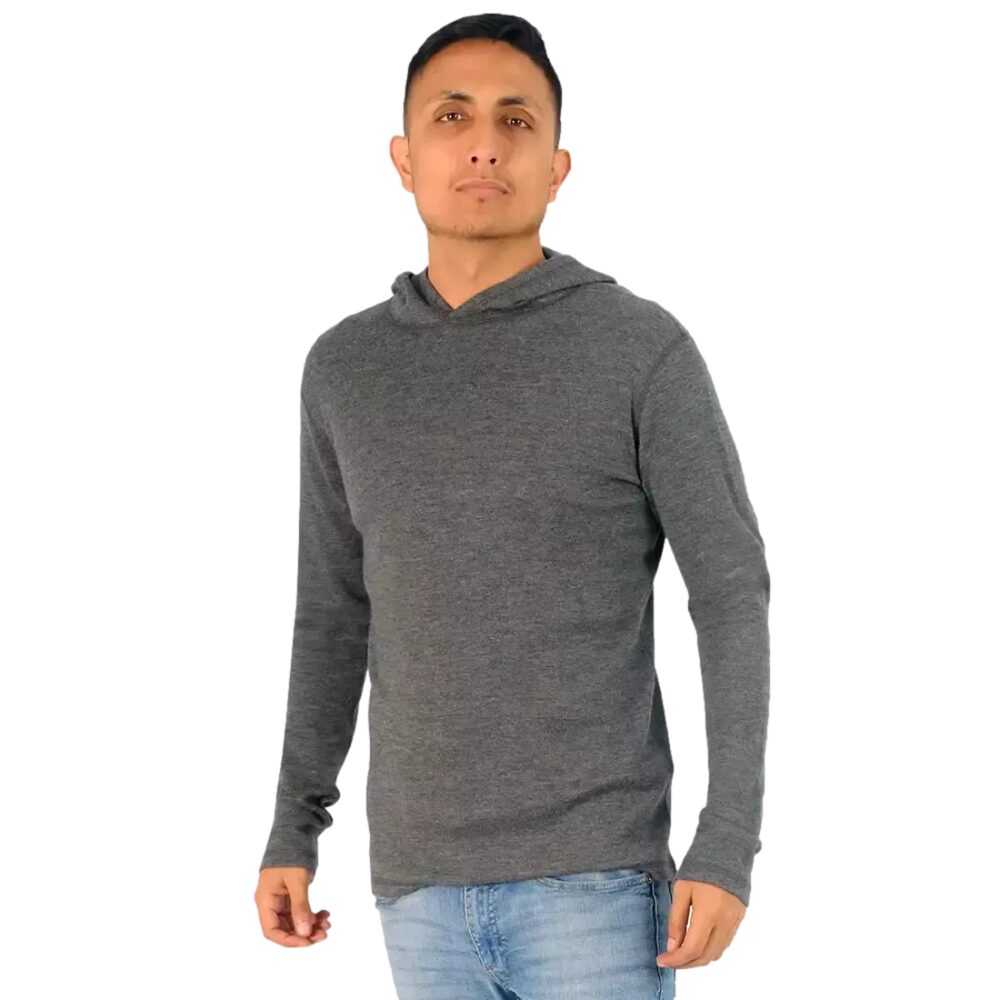
This hoodie’s combination of being pretty warm but also regulating temperature well and avoiding getting too hot is excellent, and the overall fit is relatively trim without being super tight, which works great for my build (6’, 165 lb / 183 cm, 74.9 kg, wearing a size Medium).
Burgtec Bartender Pro Josh Bryceland Signature Grips
MSRP: $26.39 USD
Zack Henderson: I’ve had a couple of hand injuries over the years, but even that doesn’t quite justify how much of a diva I am about grips. Fortunately, they’re quite cheap in the world of mountain bike components. I’ve tried dozens over the years in search of something that delivers adequate traction without being too thick, while also not being so thin as to feel like I’m just holding onto a piece of hard PVC stuck to my bars. I’ve gone so far as to abandon lock-on grips for old-school glued and wired push-ons, but they quickly became a nuisance for my role as a bike reviewer, which involves swapping parts around constantly.
I made an emergency stop at a shop in Whistler after another pair of too-thin grips left my bad knuckle joint sore after just one ride, and it’s there that I happened upon Josh Bryceland’s new signature Burgtec Bartender Pro grips. The fairly sharp edges on the grip pattern offered a lot of traction without requiring that I death-grip the bars, but the selling point was the cutouts in the inner plastic sheath that allowed for a softer feel in particular spots, like under the outside of the palm. From the first lap pounding braking holes in the Whistler Bike Park, there was a noticeable reduction in vibration making its way from the bars to my hands.
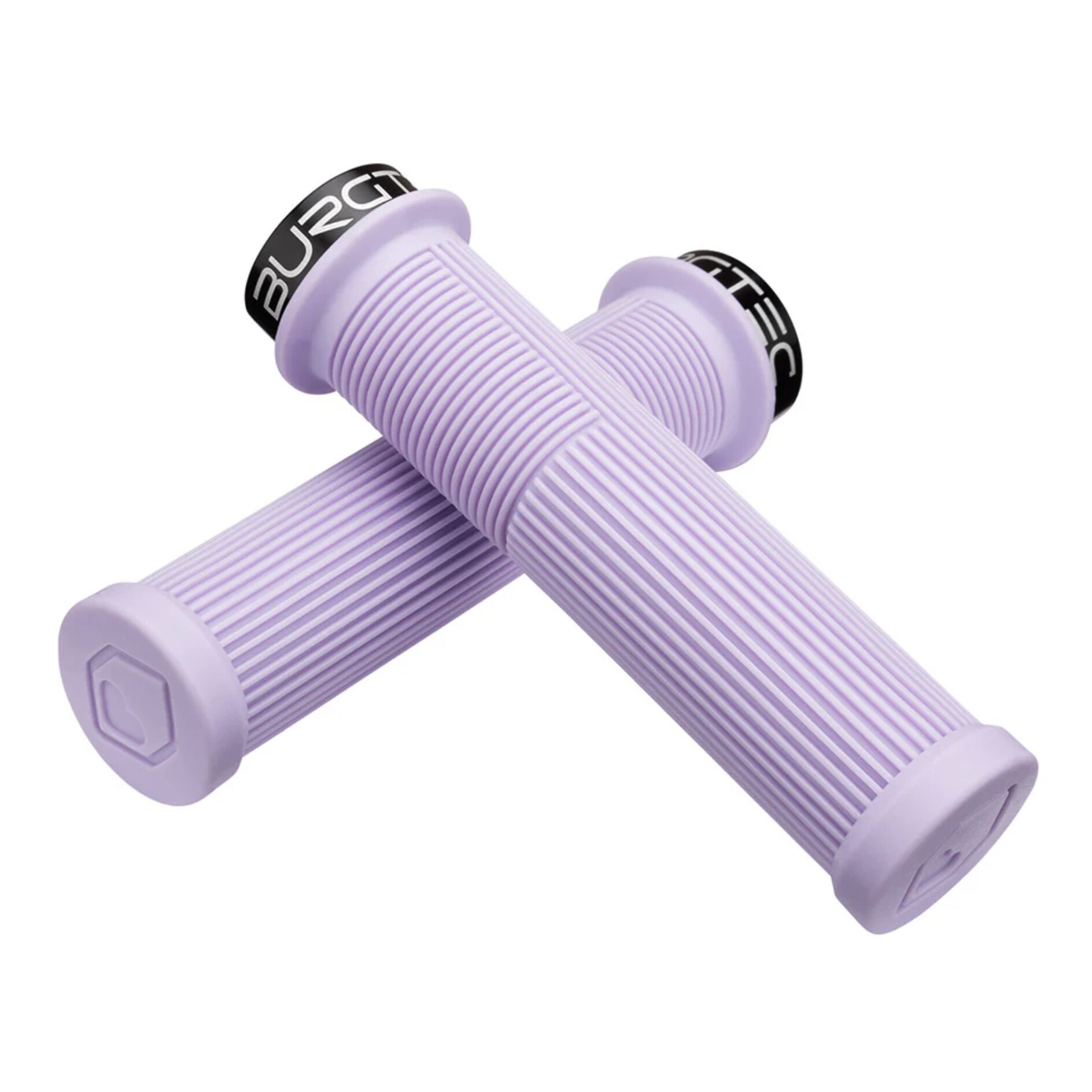
Since riding the Bryceland Signature grips for two consecutive days in the Whistler Bike Park, they’ve stayed on my bike as my new favorites for their goldilocks (for me) balance of traction, thickness, and comfort. I may have to get my hands on the Super Soft version before too long, which I’ve really liked in the Greg Minnaar Signature grips (also from Burgtec), but Ratboy’s grips have earned a place as my current favorite grips that I’ve tried.
Patagonia W’s R2 CrossStrata Pullover
MSRP: $199
Kristin Sinnott: I’ve long been a fan of the Patagonia R-series. I received my first R1 pullover in the early 2000s and immediately fell in love with it. I still wear it regularly. Patagonia has continued to iterate and create new styles and fabrics for their R-series.
The R2 CrossStrata Pullover is one of the latest additions to the collection. It has an internal fleece grid structure, but it features a zig-zag design instead of the original square grid pattern. The face of the fabric is water- and wind-resistant and burly enough that it doesn’t snag easily. Functionally, this fabric seems extremely similar to Patagonia’s R2 TechFace pieces. The R2 CrossStrata Pullover’s silhouette features a kangaroo pouch and a zippered chest pocket for a streamlined look.
So far, this has become a great layer for cool-weather adventures or around town. I wore the CrossStrata often on our trip to Iceland and Ireland this past April, and when temps started dropping in Crested Butte, I was eager to pull it out and throw it on. It offers more weather protection and a slightly more casual fit than my original R1, but like that piece, the R2 CrossStrata stands out for being quite breathable (especially compared to, say, a more traditional “puffy” midlayer).


The CrossStrata Pullover is technically part of Patagonia’s fishing collection, but I think it’s worth a look from anyone seeking a breathable and fairly warm jacket that can serve as an outer layer in milder weather and a midlayer in colder temps.
In addition to the pullover, Patagonia makes the R2 CrossStrata in a full-zip hoody and a full-zip, non-hooded jacket. The size Small is a great fit for my 5’8”, 130 lbs / 173 cm, 59 kg body.
Ombraz Cammina
MSRP: $160
Kristin Sinnott: I’m a sucker for sunglasses. I love trying on new ones, and I wear them all the time. Until this spring, I was unfamiliar with Ombraz, the ‘armless sunglass’ company, and having never tried them on, I had some reservations. Mainly, I was nervous that the strap would need to be tight across my head and, therefore, uncomfortable to wear. Secondly, how would the strap work with long hair? It turns out I didn’t need to worry about either. The strap doesn’t need to be tight to work effectively, and it can be placed below my hair, under my hair, or on top of it.
I ordered the Cammina model in their “narrow” fit; in hindsight, I should have gone for the regular fit since I prefer slightly oversized sunglasses. Despite that, I love wearing the Ombraz Cammina. I’ve had several sunglasses (with traditional arms) that are a bit too narrow and end up pinching the sides of my head. With the Cammina, I liked that I could adjust the straps for a comfortable fit, despite the frame itself being a bit narrower than I typically go for.
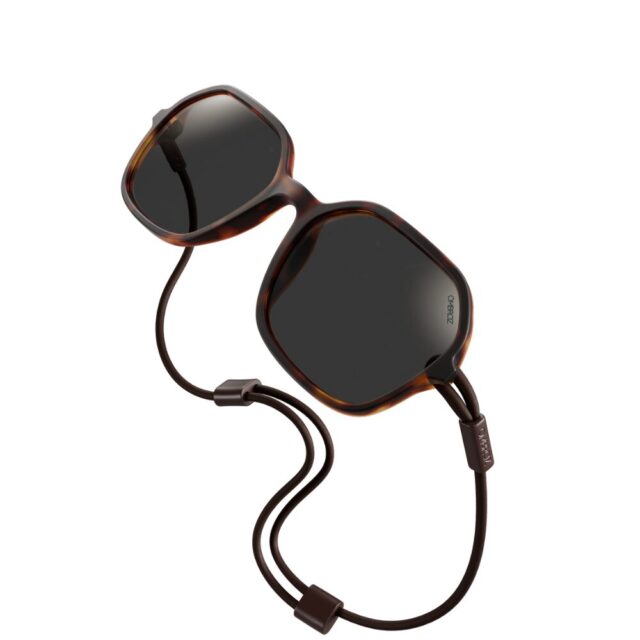
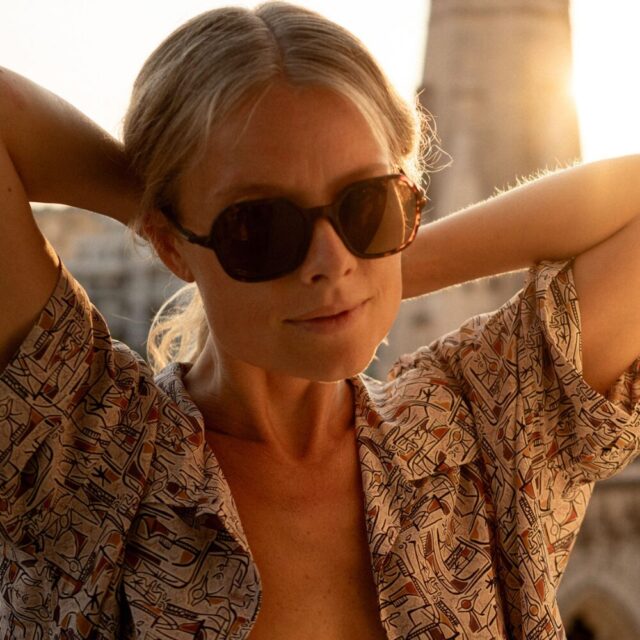

My favorite aspects of the armless design include:
- They pack down flat, making it easy to stash them in a lifejacket, purse, pocket, etc.
- The adjustable strap allows for a customized fit
- The lack of arms makes it more comfortable when worn with a helmet
- You can wear them around your neck
- I no longer need sunglass-retaining devices when near water.
While the narrower fit of the Cammina wasn’t the look I was going for, I really like the design of the sunglasses. I find myself wearing them when rafting or anywhere near water, as well as when biking, running, and traveling — especially on partly sunny days when sunglasses aren’t needed at all times and they’ll end up being packed away throughout the day.
Strafe Alpha Insulated Short
MSRP: $259
Luke Koppa: As someone whose lower body rarely gets very cold, I hadn’t been drawn to insulated bottoms in the past. However, my experience with the original Patagonia Nano-Air Pants changed that — they were so breathable, stretchy, and comfy that I ended up wearing them for hundreds upon hundreds of days (you can read my review of their latest Nano-Air Light Bottoms in this edition of Stuff We Like).
I’d now call myself a puffy-pant convert — at least the breathable ones. And Strafe’s recently revised Alpha Insulated Short falls into that category.
We reviewed the prior version of this short a couple years back, and this latest iteration maintains much of what I liked about the original while tweaking a few small things. Most notably, the new version adds button snaps at the waist to snug it down, which is an improvement over the first version (unless it fit you snugly already, it had a tendency to droop if you had stuff in its hand pockets).


Otherwise, the short is largely the same. It uses 80-g Polartec Alpha insulation, which feels about on par with most average midlayer jackets in terms of warmth (e.g., something with 60-g Primaloft). But, because of its Alpha insulation and stretchy, breathable Recon AIR fabric, the Alpha short isn’t quick to make me overheat. I still don’t use it on the majority of my winter days since my legs don’t overheat super easily, but it’s a welcome midlayer when the temperatures get below around 15°F / -9°C at the ski resort. I’ve also come to love it for sedentary periods during other outdoor pursuits — it’s awesome for late-fall fishing under waders, as well as a super light layer to throw on while glassing for hours during later-season hunts.
I really like that this short can be worn both under or over other layers. It’s thin and stretchy enough that I don’t notice it when it’s under a shell pant, but the Alpha Insulated Short’s full-length side zips let me easily throw it on over other pants without taking off boots. It’s not quite as warm as an outer layer (it’s not fully windproof), and I wouldn’t want to subject its thin fabrics to much abrasion, but those side zips have been the main reason I’ve brought it on more outings than my non-zip puffy pants. At the same time, its ¾-length cut keeps it from bunching on ski boots when worn as a midlayer.
As I mentioned about the original version, the Alpha Insulated Short is a bit of a niche piece, and an expensive one at that. But if you frequently find yourself wishing for a bit more lower-body warmth, this piece could prove surprisingly versatile.
If you prefer a full-length alternative and don’t need side zips for outer-layer use, check out the Patagonia Nano-Air Light Bottoms and Flylow Puffer Pant.
The James Brand Palmer Utility Knife
MSRP: $39–$59
Luke Koppa: I find myself needing a knife almost every day. But not for anything remotely hardcore — usually, it’s just for slicing through some packing tape.
The James Brand’s Palmer seemed like a pretty good fit for my use case. It uses standard utility knife blades and comes in a compact form factor that doesn’t take up much space in a pocket. It has a single button that lets you expose, conceal, and swap the blade with one hand, and you can fly with it if you take out the blade and pick up some replacements when / where you land.
If, say, I worked in a warehouse and was constantly using this sort of utility knife, I’d opt for a bigger, more traditional option (you don’t get as much leverage with the Palmer, due to its shorter size). But for the miscellaneous cutting tasks in my life, the Palmer has been easy to use and barely noticeable when stowed.
The James Brand recently launched some new versions of the Palmer that use a 100% post-consumer recycled plastic case, said to be inspired by the translucent colors of the Game Boy and 90s-era Mac computers. That’s what I’ve been using, but if you want to spend a bit more for a metal version, those are also available for $59.
As with the other products I’ve used from The James Brand, the plastic Palmer seems very well made, and I figure it will get used a whole lot by me for the foreseeable future.
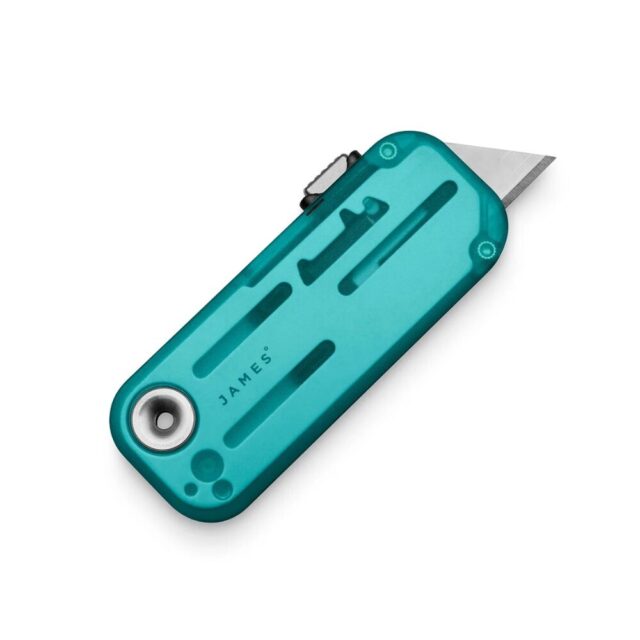
Patagonia Iron Forge Fleece-Lined Jac Shirt
MSRP: $179
Luke Koppa: As you’d probably guess based on my writeup of The James Brand Palmer, I don’t exactly live what most people would call a “blue collar” life. Most of my “work” is spent at a desk, and unlike our reviewer Kara, I don’t run a farm on the side.
But even as a soft-handed man coddled by the modern world, I still have a strong appreciation for workwear. Partly because I like stuff that lasts without me having to worry about babying it, and partly because I just tend to be drawn to that sort of aesthetic (insert “blue collar stolen valor” joke here).
Patagonia launched their “Iron Forge” line of workwear several years ago, and recently, I’ve been testing a few of the current pieces. I haven’t broken out the fleece-lined pants much so far (they’ll likely make an appearance in a future edition of this series), but I’ve been grabbing the Iron Forge Fleece-Lined Jac Shirt a lot this fall.



It’s pretty much what it looks like — a heavy shirt / light jacket with a rugged outer fabric and some moderate insulation. The former is a 12.9-oz canvas that’s 55% hemp / 27% recycled polyester and 18% organic cotton; it feels quite burly but is more supple than brand-new Carhartt duck canvas.
For warmth, this piece features Patagonia’s 100% recycled “Micro D” fleece throughout the torso and 100-g Thermogreen recycled synthetic insulation in the sleeves (the sleeves are lined with slippery taffeta to more easily move over layers).
Feature highlights include fleece-lined handwarmer pockets, a drop-in chest pocket with a snap, and a standard button placket. The fit is pretty roomy by Patagonia standards, particularly through the torso. At 5’8”, 155 lbs (173 cm, 70 kg), I could probably size down to a Small, but I prefer the more generous fit of the Medium, given that I’m usually throwing it on over some other layers.
Overall, this is a fairly standard shirt jacket for those who are looking for something warm and rugged. During my first few months with it, I’m sure I haven’t scratched the surface of what I expect its lifetime to be. I’ll continue to grab it when doing yard or car work in colder weather, and just when I want a warm layer that I don’t have to worry about getting dirty, scratching, tearing, etc.
Peak Design Cuff Wrist Strap
MSRP: $34.95 USD
Zack Henderson: Photography is newly back in my life after dabbling a bit in high school and college. While it started as a necessary part of reviewer life, I’ve found myself enjoying it more and more for travel and various outdoor pursuits. I use the excellent Evoc Capture 7L camera hip pack while I’m riding, and while I started off with a typical neck-strap setup, I’ve found my new preferred fast-and-light option in the Peak Design Cuff wrist strap
The Cuff uses the excellent anchor system shared across Peak Design’s camera strap solutions, but the Cuff is otherwise a fairly simple nylon strap that goes around your wrist. The metal slider has a magnet in it, which holds the strap in the loosest position until you add tension, at which point the slider disengages and slides easily along the strap. While it might sound gimmicky, it is drastically easier to live with than a typical friction-based strap adjustment setup because it adjusts so quickly and smoothly, allowing me to grab the camera out of my bag, quickly tug on the strap, and have it secured to my wrist.

I should caveat that the Cuff is a much less robust option relative to the Peak Design Clutch. The Cuff is also less bulky and suits my preferences a bit more by being attached to my wrist rather than my hand. My Sony A7C is relatively compact as far as full-frame camera bodies go, and if I had a larger-bodied camera or particularly large lenses, I might prefer the Clutch for its added stability. But as a lightweight grab-and-go item for keeping my camera secure as I’m tromping around in the bushes looking for a quick riding shot, the Cuff has been excellent.
